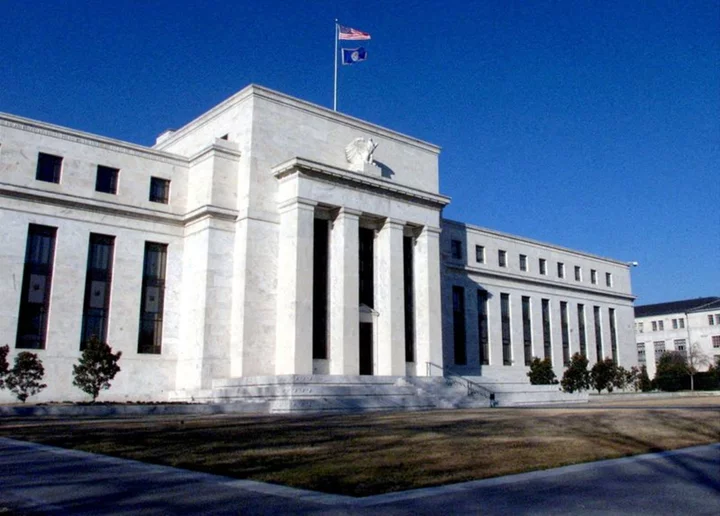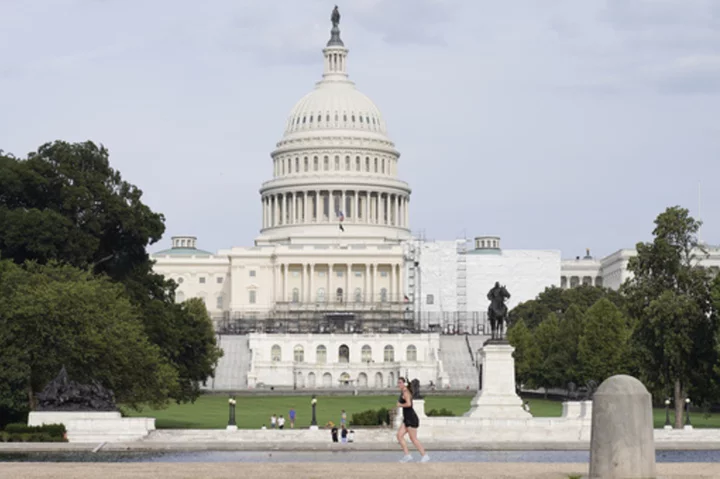By Howard Schneider
WASHINGTON Even as the U.S. economy bounds along, rising interest rates on government bonds could threaten the plans of elected officials and central bankers who thought they had set the stage for a steady period of ongoing growth, low unemployment and gradually falling inflation.
A sustained rise in interest rates could not just slow the economy more than Federal Reserve officials feel is needed to lower inflation, but saddle the Biden administration with higher borrowing costs and larger deficits that put top priorities at risk, throw a new wrinkle into the 2024 presidential election, and force the U.S. central bank to recast some long-held plans.
In a throwback to the 1990s, when the bond market's gyrations were a White House fixation, an administration that has trumpeted the economy's resilience now must watch how it holds up as financing costs escalate.
"It's not obvious that it is putting a huge amount of pressure on households or businesses," Treasury Secretary Janet Yellen said in an interview with the Financial Times that was published on Monday, ahead of the start of the International Monetary Fund and World Bank annual meetings in Morocco.
But rising bond yields will need to be added to the Fed's assessment of how overall financial conditions may influence economic growth, with even some hawkish policymakers saying recent bond market moves may dent the need for more rate hikes.
"Financial conditions have tightened notably in recent months," Dallas Fed President Lorie Logan said on Monday, and depending on a diagnosis of what's driving it "there may be less need to raise" the U.S. central bank's policy rate.
The eruption of violence in Israel over the weekend could change bond market dynamics, as elevated global political risk stokes demand for safe-haven assets such as U.S. government bonds. Indeed, Treasury yields were down by the most in more than a month early on Tuesday.
ON THE RISE
Nonetheless, since the Fed's last rate hike in July, yields on the long-term Treasuries that influence household and business borrowing costs - not to mention government financing rates - have surged by close to a full percentage point.
Fed Chair Jerome Powell voiced no particular concern when asked about it in a press conference after the Fed's Sept. 19-20 policy meeting, and in fact could take some satisfaction that it did not seem to reflect expectations for higher inflation.
"It's not mostly about inflation expectations," Powell said, citing the one thing that would cause immediate concern at the Fed. "It'll probably have something to do with stronger growth ... More supply of Treasuries," due to rising deficits.
But those other factors are not necessarily benign.
"The fact that deficits in the U.S. are near 8% of (gross domestic product) today, at a time when the economy is doing okay, and the unemployment rate is very low, that's very unusual," said Gene Tannuzzo, global head of fixed income at Columbia Threadneedle. "Typically, deficits only reached this level during deep recessions when ... government spending increases to sort of prop up the economy ... If government spending doesn't come down now, how large is it going to be if we do hit another recession?"
Surges in bond yields can reverse as quickly as they occur. If the Fed's current outlook proves correct, a combination of slowing growth and falling inflation may drive credit costs lower next year as the central bank pivots from its current high-rates strategy and cuts borrowing costs.
President Joe Biden's potential problem lies down the road if market-based interest rates keep rising and prompt a recession, or even start to betray a loss of confidence in the federal government's ability to pay its bills - an erosion of the "exorbitant privilege" that keeps U.S. financing costs low because of the country's reputation as a risk-free borrower.
Events like a recent credit downgrade by Fitch Ratings, the repeated flirtations with debt defaults and government shutdowns, and the ouster last week of the Republican speaker of the U.S. House of Representatives are possible reasons investors are demanding more of a return for buying long-term U.S. debt.
Add in the Treasury's need to sell more bonds to finance large deficits, and the foundation is laid not just for higher U.S. government borrowing costs, but also for other countries and companies competing for the world's supply of savings.
"The bottom line is that the world only saves a limited amount of dollars every year, and the significant growth in the size of the Treasury market is at risk in 2024 of crowding out demand for other types of fixed income," Torsten Slok, chief economist at Apollo Global Management, wrote of the roughly 23% jump in issuance of Treasuries coming next year.
That transmits the pressure of rising rates into the world economy's weakest cracks, raising the risk that a key bank or pension fund could fail, or a currency crisis or debt default erupts in one corner of the globe and spills into others.
'COMPLICATED'
For the Fed, the challenge is telling the difference between a normal adjustment to tight policy, and something that smacks of instability.
To a large degree rising rates on government bonds and the pass-through to household and business credit are what the central bank wants to happen alongside its own rate hikes.
So far, Atlanta Fed President Raphael Bostic said last week, the rise in long-term rates, while "complicated," hadn't yet seemed to impact the economy "outside what would be happening in an ordinary tightening cycle."
If that continues, however, it may raise questions not just about Fed policy rates but about the central bank's own dwindling stash of Treasuries, which is effectively increasing the market's supply of bonds and adding to the upward pressure on rates.
The Fed has other reasons for shrinking its asset holdings, and won't want to change course absent signs of economic or financial stress.
But even if officials say they are not concerned yet, they are certainly paying attention.
"When the central banks are buying government bonds, that can mask large government deficits because when governments are running large deficits and borrowing a lot of money ... the central bank is turning around and buying a lot of debt on the other side," Tannuzzo said. "Now we are in an environment ... where central banks are going the other way."
(Reporting by Howard Schneider; Editing by Dan Burns and Paul Simao)









